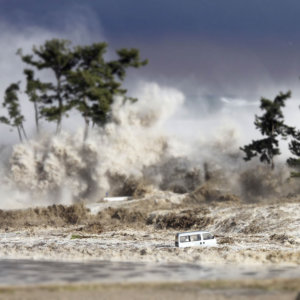Mitigation or Adaptation? Lessons from Abolition in the Battle Over Climate Policy
Both mitigation and adaptation are needed to address climate change risks, says MIT professor John Sterman. We have the ingenuity to successfully tackle this complex issue, and lessons from the past to guide us.
Topics
Leading Sustainable Organizations
What’s the best way to address the risks of climate change? Mitigation or adaptation? Should the world cut greenhouse gas emissions to lower the risks of harm from climate change (mitigation), or should we just get used to it (adaptation), spending to build seawalls, move populations inland, and figure out how to grow food for more than 9 billion people in a world of higher temperatures, droughts, and extreme weather?
Many people, including some I greatly respect, have lately argued that advocacy for mitigation isn’t working, so we should shift to advocacy for adaptation. They say that’s where the interest is after Superstorm Sandy, that’s how to get people engaged, and that’s where the money is. The frustration of climate activists around mitigation is understandable. The failure of the 2009 Copenhagen climate conference was deeply discouraging, and since then the international negotiations have stalled. Total pledges for emissions reductions under the UNFCCC’s (United Nations Framework Convention on Climate Change) voluntary system, even if fully implemented, are nowhere near enough. With gridlock in the U.S. Congress and the erosion of climate commitments in other nations, more and more people are giving up on mitigation.
Of course, adaptation is necessary. We’ve already warmed the climate about 1.4 °F (0.8 °C) over preindustrial levels. Global CO₂ emissions have reached new records every year since 2009. In May, atmospheric CO₂ hit 400 ppm for the first time in human history. We are dumping CO₂ into the atmosphere about twice as fast as nature can remove it. Even with the best imaginable policies, the climate will keep changing for decades, and sea level will keep rising for centuries. Adaptation is necessary.
However, adaptation without mitigation is futile. Since Sandy, the focus has been on updating flood maps and building sea walls. But sea walls are the Maginot line of climate change. Sea walls won’t help with ocean acidification, water shortage, drought, more frequent and more dangerous wildfires, declines in agricultural output, and the many other impacts of climate change, not to mention the climate refugees and risks of war those impacts create.

